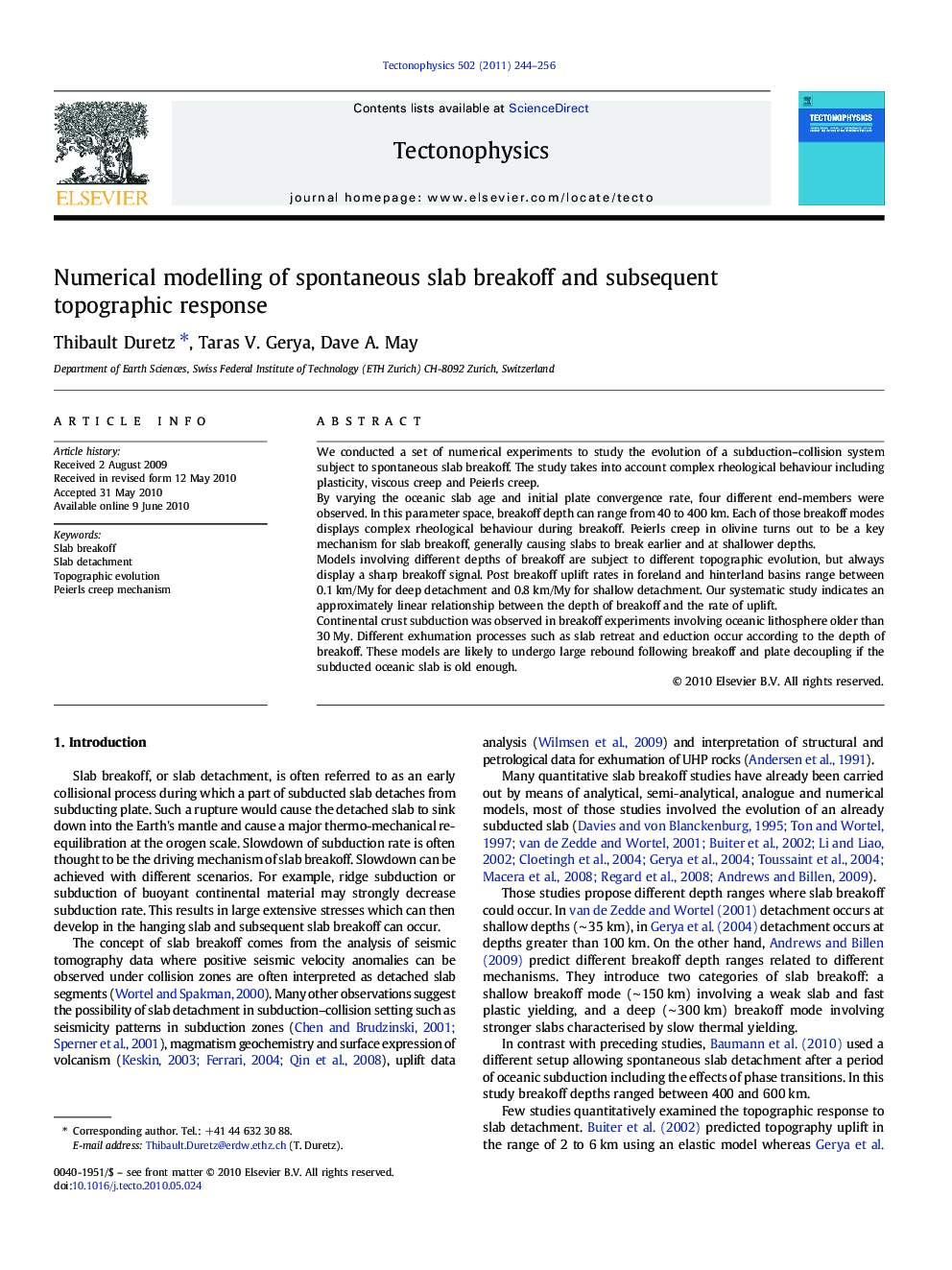| Article ID | Journal | Published Year | Pages | File Type |
|---|---|---|---|---|
| 4693239 | Tectonophysics | 2011 | 13 Pages |
We conducted a set of numerical experiments to study the evolution of a subduction–collision system subject to spontaneous slab breakoff. The study takes into account complex rheological behaviour including plasticity, viscous creep and Peierls creep.By varying the oceanic slab age and initial plate convergence rate, four different end-members were observed. In this parameter space, breakoff depth can range from 40 to 400 km. Each of those breakoff modes displays complex rheological behaviour during breakoff. Peierls creep in olivine turns out to be a key mechanism for slab breakoff, generally causing slabs to break earlier and at shallower depths.Models involving different depths of breakoff are subject to different topographic evolution, but always display a sharp breakoff signal. Post breakoff uplift rates in foreland and hinterland basins range between 0.1 km/My for deep detachment and 0.8 km/My for shallow detachment. Our systematic study indicates an approximately linear relationship between the depth of breakoff and the rate of uplift.Continental crust subduction was observed in breakoff experiments involving oceanic lithosphere older than 30 My. Different exhumation processes such as slab retreat and eduction occur according to the depth of breakoff. These models are likely to undergo large rebound following breakoff and plate decoupling if the subducted oceanic slab is old enough.
